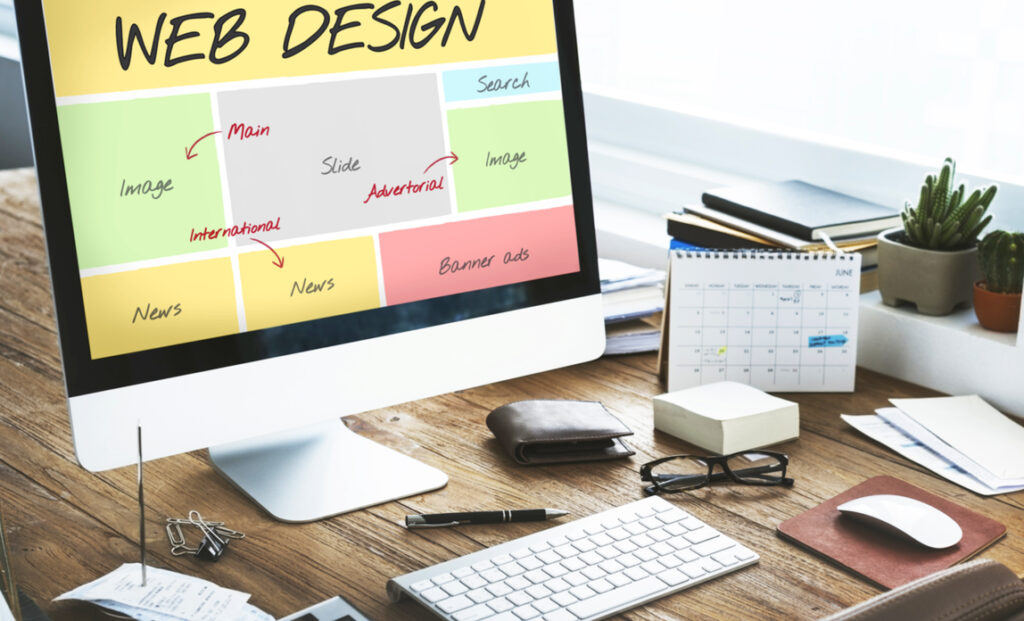Website Design Types and Their Primary Functions
website design types can help improve various aspects of companies, including increasing customer outreach, sales and revenue.
If you’re hoping to develop an attractive and effective website
it can be beneficial to understand which types of designs are best suited for your company or business.
In this article, we discuss what web design is and give you lists of popular website designs and layouts.

What is web design?
Web design is the act of designing and developing a website for the internet.
Though creating a website requires additional skills and resources, such as software coding and developing
the design aspect often focuses on the user interface and experience.
The user experience can include the website’s appearance, functionality, layout and content.
Website Design team work to find the most effective way to display information on a website, so users find it engaging and helpful.
To accomplish this, web designers will often use different web design Types
and layouts depending on the site’s intended function and use.

website design Types
Here is a list of different website designs and when it’s best to use each one:
Single page
Single page designs are websites that convey all of their information on a single webpage.
The single page can be as long as the designer wants, allowing users to scroll down in order to see all the information.
When developing the design, many companies and organizations use a linear journey or narrative to create a flow to the information being relayed to visitors.
This type of design can be very versatile because it has many unique uses.
For example, it can be used to sell products, telling the company’s story
as the page progresses, or it can be used for artists to share their story and portfolio.
Static website
A static website is a website with little to no user interaction, and the design is generally consistent on all platforms.
Most often, the website is created using basic code, such as HTML or CSS, and has a set number of webpages, which can help generate a low-cost for the site’s creation.
Because of its simple model and limited ability to interact with visitors, static websites are generally used to relay information, instead of sell goods and services.
Dynamic website
Dynamic websites, unlike static websites, allow users to interact with the material on the webpage, creating a more active and exciting website design.
The code to develop these types of webpages often requires something with a little more versatility, such as JavaScript, PHP or ASP.
Because of their more intricate model and design, dynamic websites can cost a little more money
and sometimes have a longer load time compared to static websites.
However, they can also effectively relay information and the benefits of a product or service through an engaging display.
Responsive design
A responsive website design changes its layout and display of information depending on the size of the browser.
Whether the website is being viewed on a mobile device, or a computer browser
the webpage can manipulate itself, by wrapping text and scaling images, to fill any size screen with the most pertinent information.
This type of design is beneficial to many websites and organizations
because it can allow users to browse through information and products on different devices more easily.
Liquid design
A liquid website design behaves similarly to a responsive design, except it doesn’t manipulate the layout of the page depending on the size of the screen.
The design itself shrinks or stretches the entire webpage to fit the size of the chosen window
which can be helpful for webpages that don’t want to sacrifice information depending on the size of the browser.
However, this can also cause the design to have very small, or warped text when viewing it on screens that are too small or too large.
Fixed design
A fixed design allows designers to create a website that doesn’t change no matter the size of the window or screen.
The site uses a strict resolution and will open to those exact measurements whether the user is viewing it on a mobile device or computer monitor.
The strict resolution can help designers create a specific website layout which they know will stay consistent on every browsing device.
However, this can also create some hassle for users on smaller screens because it might require more effort
on their part to scroll around the page and find the information they need.
Some websites require good webhosting , We provide the website hosting with managed servers located USA
Looking for professional website design in Egypt ? Contact our Website Development Team today

Leave a Reply